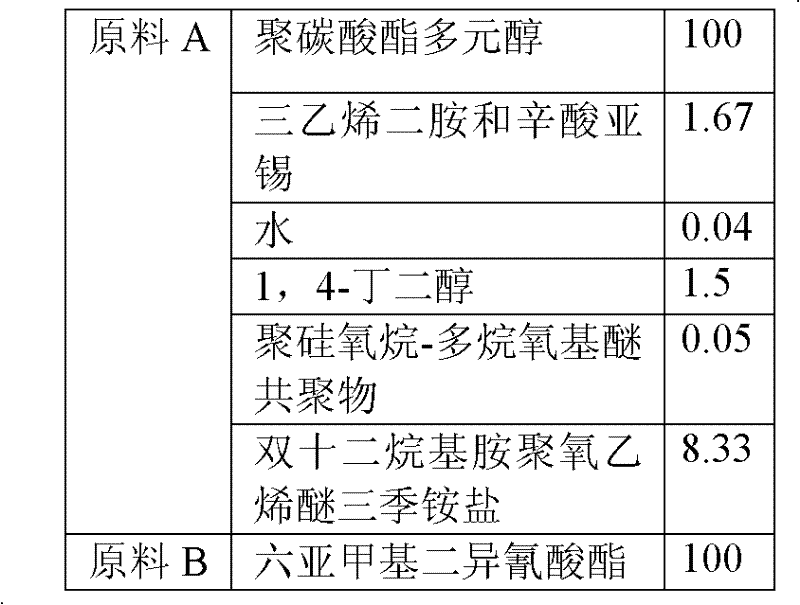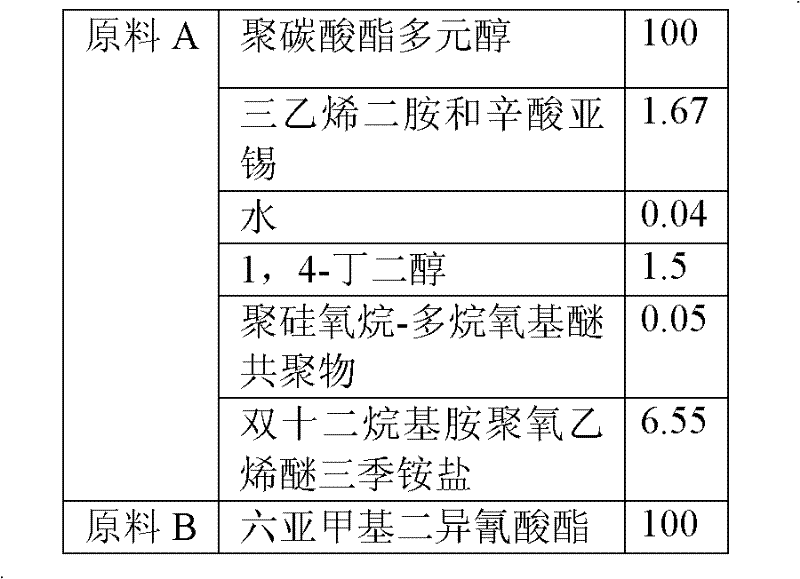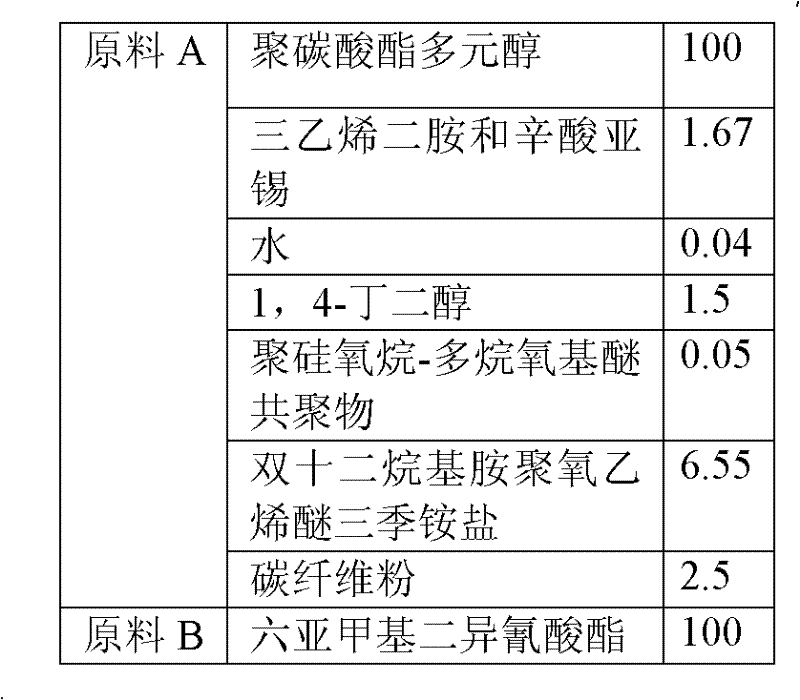Anti-static polyurethane material for manufacturing shoe soles, shoe sole manufacturing method and manufacturing method of dual-density polyurethane safety shoe soles
A technology of polyurethane materials and manufacturing methods, which is applied in the direction of shoe soles, applications, footwear, etc., can solve the problems of reducing safety performance, affecting the demoulding time of soles, production efficiency, and low hardness of soles, so as to improve anti-static performance and remove soles. The effect of good mold and high production efficiency
- Summary
- Abstract
- Description
- Claims
- Application Information
AI Technical Summary
Problems solved by technology
Method used
Image
Examples
Embodiment 1
[0036] Embodiment 1: its raw material ratio is as follows (unit: parts by weight):
[0037]
[0038] Its manufacturing method is as follows:
[0039] First, bake polyester polyol (polycarbonate polyol), isocyanate (hexamethylene diisocyanate) at 70°C for 8 hours; , polysiloxane-polyalkoxy ether copolymer, didodecylamine polyoxyethylene ether triquaternary ammonium salt and carbon fiber powder are added to the baked polyol (polycarbonate polyol), and stirred evenly to form A Material; Finally, material A and baked raw material B isocyanate (hexamethylene diisocyanate) are mixed and casted, and the polyurethane sole is obtained through 3 minutes of aging. The volume resistance value and bending resistance of the material in this embodiment are shown in Table 1.
Embodiment 2
[0040] Embodiment 2: its raw material ratio is as follows (unit: parts by weight):
[0041]
[0042] Its manufacturing method is as follows:
[0043]Dry polyether polyol (polytetrahydrofuran ether diol) and isocyanate (diphenylmethane diisocyanate) at 70°C for 8 hours; then dry triethylenediamine, stannous octoate, water, glycerin, polysiloxane Add alkane-polyalkoxy ether copolymer, stearylamine polyoxyethylene ether diquaternary ammonium salt and carbon fiber powder into the baked polyol (polytetrahydrofuran ether glycol), stir to form A material; finally The material A and the baked raw material B isocyanate (diphenylmethane diisocyanate) are mixed and casted, and the polyurethane shoe sole is obtained through 3 minutes of aging. The volume resistance value and bending resistance of the material in this embodiment are shown in Table 1.
Embodiment 3
[0048] Embodiment 3: its raw material ratio is as follows (unit: parts by weight):
[0049]
[0050] Its manufacturing method is as follows:
[0051] First, bake polyester polyol (polycarbonate polyol), isocyanate (diphenylmethane diisocyanate) at 70°C for 8 hours; secondly, triethylenediamine, stannous octoate, water, 1,4-butanedi Alcohol, polysiloxane-polyalkoxy ether copolymer, didodecylamine polyoxyethylene ether triquaternary ammonium salt and carbon fiber powder are added to the baked polyol (polycarbonate polyol), and stirred evenly to form Material A; finally, material A and baked raw material B isocyanate (diphenylmethane diisocyanate) are mixed and cast, and the polyurethane sole is obtained through 3 minutes of aging. The volume resistance value and bending resistance of the material in this embodiment are shown in Table 1.
PUM
| Property | Measurement | Unit |
|---|---|---|
| Density | aaaaa | aaaaa |
Abstract
Description
Claims
Application Information
 Login to View More
Login to View More - R&D
- Intellectual Property
- Life Sciences
- Materials
- Tech Scout
- Unparalleled Data Quality
- Higher Quality Content
- 60% Fewer Hallucinations
Browse by: Latest US Patents, China's latest patents, Technical Efficacy Thesaurus, Application Domain, Technology Topic, Popular Technical Reports.
© 2025 PatSnap. All rights reserved.Legal|Privacy policy|Modern Slavery Act Transparency Statement|Sitemap|About US| Contact US: help@patsnap.com



